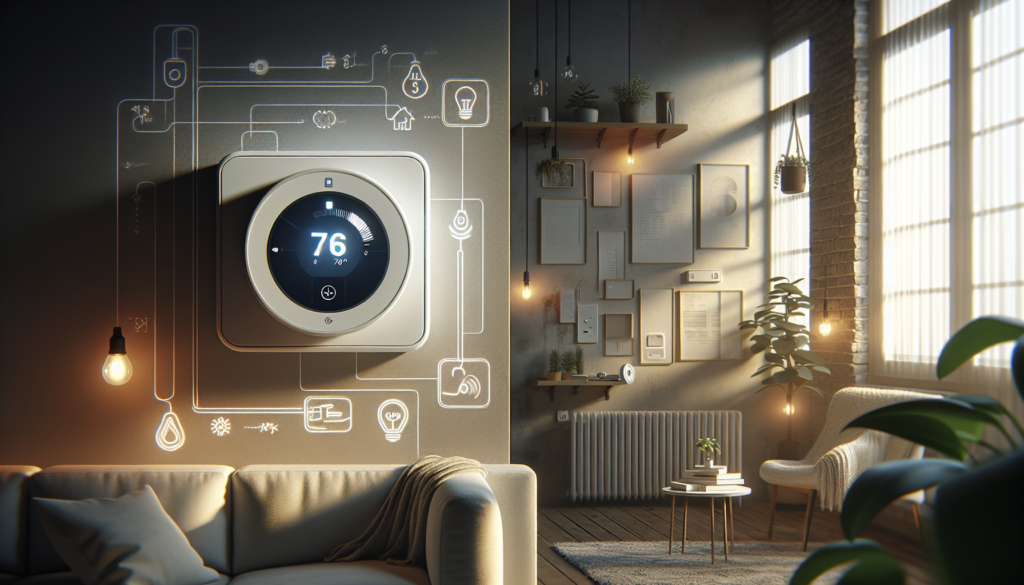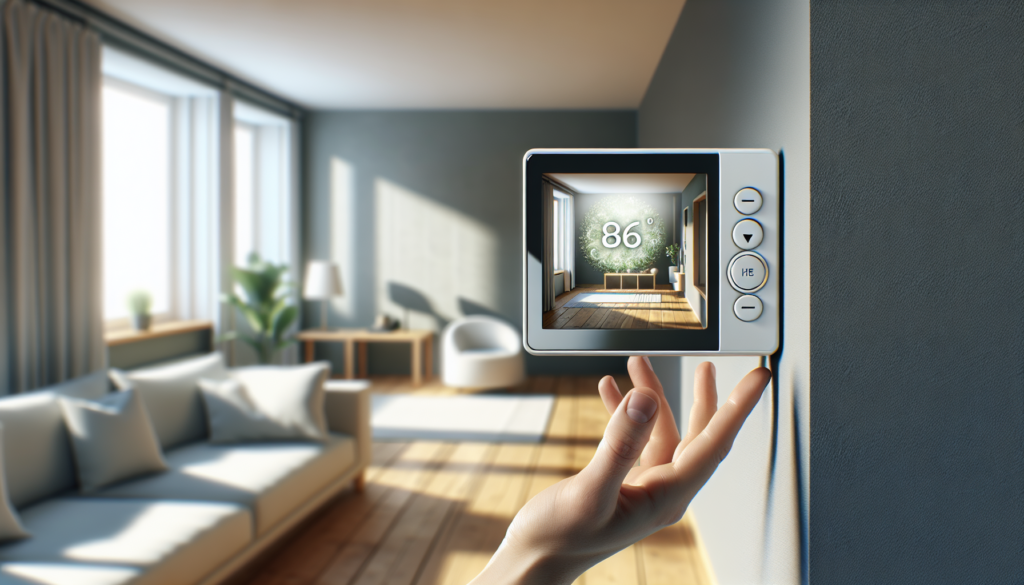Are you looking for practical ways to reduce your energy consumption at home? Look no further! In this article, you will discover a range of tips that are not only easy to implement but also highly effective in conserving energy and lowering your utility bills. From simple changes in your daily routine to appliance upgrades, these tips will empower you to take control of your energy usage and make a positive impact on the environment. So let’s get started on your journey to becoming a more energy-conscious homeowner!

Upgrade to energy-efficient appliances
One of the most effective ways to reduce energy consumption at home is by upgrading to energy-efficient appliances. Household appliances such as refrigerators, washing machines, dishwashers, and air conditioners can consume a significant amount of electricity. By replacing old, energy-guzzling appliances with new, energy-efficient ones, you can save a substantial amount of energy and lower your electricity bills.
When choosing energy-efficient appliances, look for the Energy Star label. This label indicates that the appliance has met or exceeded the energy efficiency standards set by the Environmental Protection Agency. Energy Star-certified appliances are designed to consume less energy without compromising on performance. By investing in these appliances, you not only save energy but also contribute to reducing greenhouse gas emissions and protecting the environment.
Optimize heating and cooling systems
Heating and cooling systems account for a large portion of household energy consumption. To minimize energy usage in this area, it is important to optimize your heating and cooling systems. Start by properly insulating your home to prevent heat loss during the winter and reduce heat gain during the summer. This will help in maintaining a comfortable temperature inside your house without relying heavily on heating or cooling appliances.
Regular maintenance of your heating and cooling systems is also crucial. Clean or replace air filters regularly to ensure proper airflow, which will increase the efficiency of these systems. Additionally, consider upgrading to a programmable thermostat. Programmable thermostats allow you to set different temperature levels for different times of the day, so you can adjust the heating and cooling settings based on your actual needs. This way, you can avoid unnecessary energy consumption when you are not at home or when everyone is asleep.
Improve insulation
Proper insulation is key to reducing energy consumption at home. Insulating your home not only helps in maintaining a comfortable indoor temperature but also prevents air leaks, reducing the load on your heating and cooling systems. The most common areas for insulation include walls, floors, and attics.
Consider using insulation materials that provide high thermal resistance, such as fiberglass, cellulose, or spray foam insulation. Installing weatherstripping around windows and doors can also help in sealing any gaps or cracks that may cause drafts. By improving insulation, you can significantly reduce energy loss, resulting in lower energy bills and a more energy-efficient home.
Manage lighting usage
Lighting is another significant contributor to home energy consumption. To reduce energy usage in this area, consider switching to energy-efficient lighting options such as LED or CFL bulbs. These bulbs consume significantly less energy and last much longer compared to traditional incandescent bulbs.
In addition to using energy-efficient bulbs, it is important to develop good lighting habits. Make it a habit to turn off lights when they are not in use, and make the most of natural lighting during the day. Use task lighting instead of relying on overhead lights to illuminate specific areas. By managing your lighting usage effectively, you can save a considerable amount of energy and lower your electricity bills.

Utilize smart thermostats
Smart thermostats are a valuable addition to any home seeking to reduce energy consumption. These technologically advanced devices can learn your temperature preferences and adjust the heating and cooling settings accordingly. By optimizing the temperature settings based on occupancy and weather conditions, smart thermostats can help you save energy and money.
In addition to their adaptive capabilities, smart thermostats can also be controlled remotely through smartphone apps. This means you can adjust your home’s temperature even when you are away, ensuring that you don’t waste energy heating or cooling an empty house. Some smart thermostats even provide energy consumption reports, allowing you to monitor and track your energy usage patterns. By utilizing smart thermostats, you can enhance your energy-saving efforts and have greater control over your home’s energy consumption.
Minimize vampire power
Vampire power, also known as standby power or phantom power, refers to the energy consumed by electronic devices and appliances when they are turned off but still plugged into an outlet. This hidden energy consumption may seem insignificant, but it can add up over time and contribute to a significant amount of wasted energy.
To minimize vampire power, unplug electronic devices and appliances when they are not in use. Alternatively, you can use power strips with built-in switches to conveniently turn off multiple devices with a single switch. Investing in smart power strips that automatically cut off power to devices in standby mode can save you the hassle of manually unplugging each device. By minimizing vampire power, you can reduce unnecessary energy consumption and achieve additional energy savings.
Make use of natural light
One of the simplest yet effective ways to reduce energy consumption is to make use of natural light. During daylight hours, open curtains or blinds to allow natural light to illuminate your living spaces. Opt for light-colored window treatments or sheer curtains that allow more light to pass through. By doing so, you can minimize the need for artificial lighting and rely more on free, energy-efficient sunlight.
Another way to maximize natural light is by strategically placing mirrors to reflect and distribute sunlight throughout the room. This can help to brighten up darker corners and reduce the need for additional lighting. Take advantage of skylights or light tubes to bring in natural light to areas with limited access to windows. By utilizing natural light, you can not only save energy but also create a more pleasant and inviting living environment.
Seal air leaks
Air leaks can greatly affect your home’s energy efficiency by allowing conditioned air to escape and outdoor air to enter. By sealing air leaks, you can minimize the need for artificial heating and cooling, resulting in significant energy savings.
Start by identifying common areas where air leaks occur, such as windows, doors, electrical outlets, and plumbing fixtures. Use weatherstripping or caulking to seal gaps around windows and doors, preventing drafts and heat loss. Seal electrical outlets and switches with foam gaskets to minimize air leakage. Insulate hot water pipes and ductwork to prevent heat loss during distribution. By taking steps to seal air leaks, you can create a more energy-efficient home and reduce your energy consumption.
Practice energy-saving habits
In addition to making physical changes to your home, adopting energy-saving habits can have a significant impact on reducing energy consumption. Simple actions like turning off lights when leaving a room, unplugging chargers when not in use, and using power-saving modes on electronic devices can make a difference.
Make a conscious effort to reduce energy use by adjusting your daily routines. Take shorter showers to conserve hot water, wash laundry in cold water whenever possible, and hang clothes to dry instead of using a dryer. Use energy-efficient cooking methods like using the right-sized pots and pans, matching burner sizes, and keeping lids on while cooking.
Encourage family members to practice energy-saving habits as well. Educate children about the importance of turning off lights and electronics when not needed. By practicing these energy-saving habits collectively, you can significantly reduce your household’s energy consumption and contribute to a more sustainable future.
Consider renewable energy options
If you are looking for a long-term solution to reduce your home’s energy consumption, consider incorporating renewable energy sources. Renewable energy options such as solar power can provide you with clean, sustainable energy while reducing your dependence on traditional electricity grids.
Installing solar panels on your roof allows you to harness the power of the sun and convert it into electricity. This renewable energy source is not only environmentally friendly but also cost-effective in the long run. By generating your own electricity, you can significantly reduce your energy bills and even earn credits for any excess energy you produce, which can be fed back into the grid.
Before considering renewable energy options, assess your home’s energy needs and consult with professionals to determine the feasibility and cost-effectiveness of such installations. Investing in renewable energy not only helps reduce your carbon footprint but also ensures a more sustainable future for generations to come.
By implementing these tips for reducing energy consumption at home, you can create a more energy-efficient living environment while saving money on your utility bills. Remember, even small changes can make a big difference when it comes to reducing energy consumption and protecting the environment. So start making eco-friendly choices today and enjoy the benefits of a more sustainable lifestyle.

